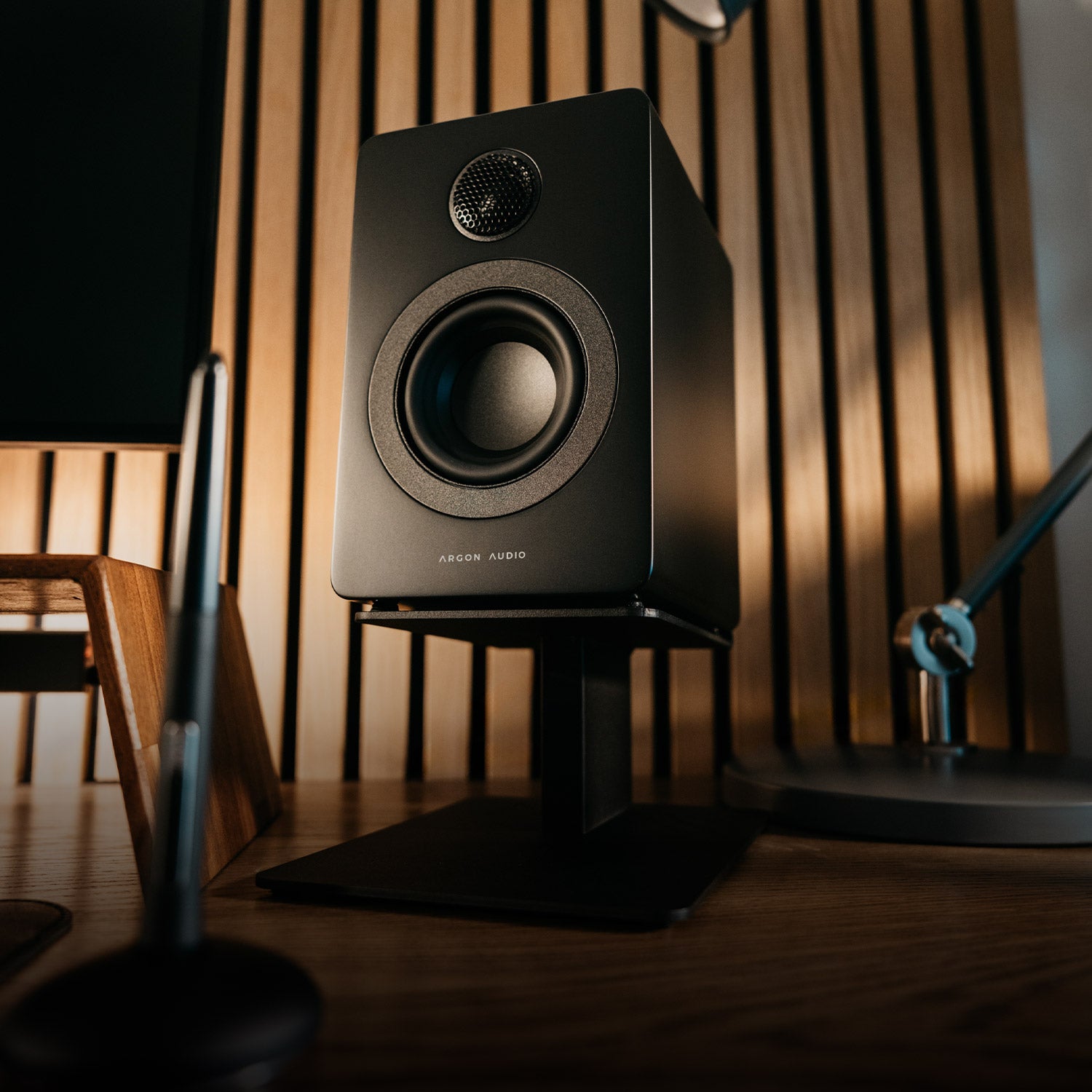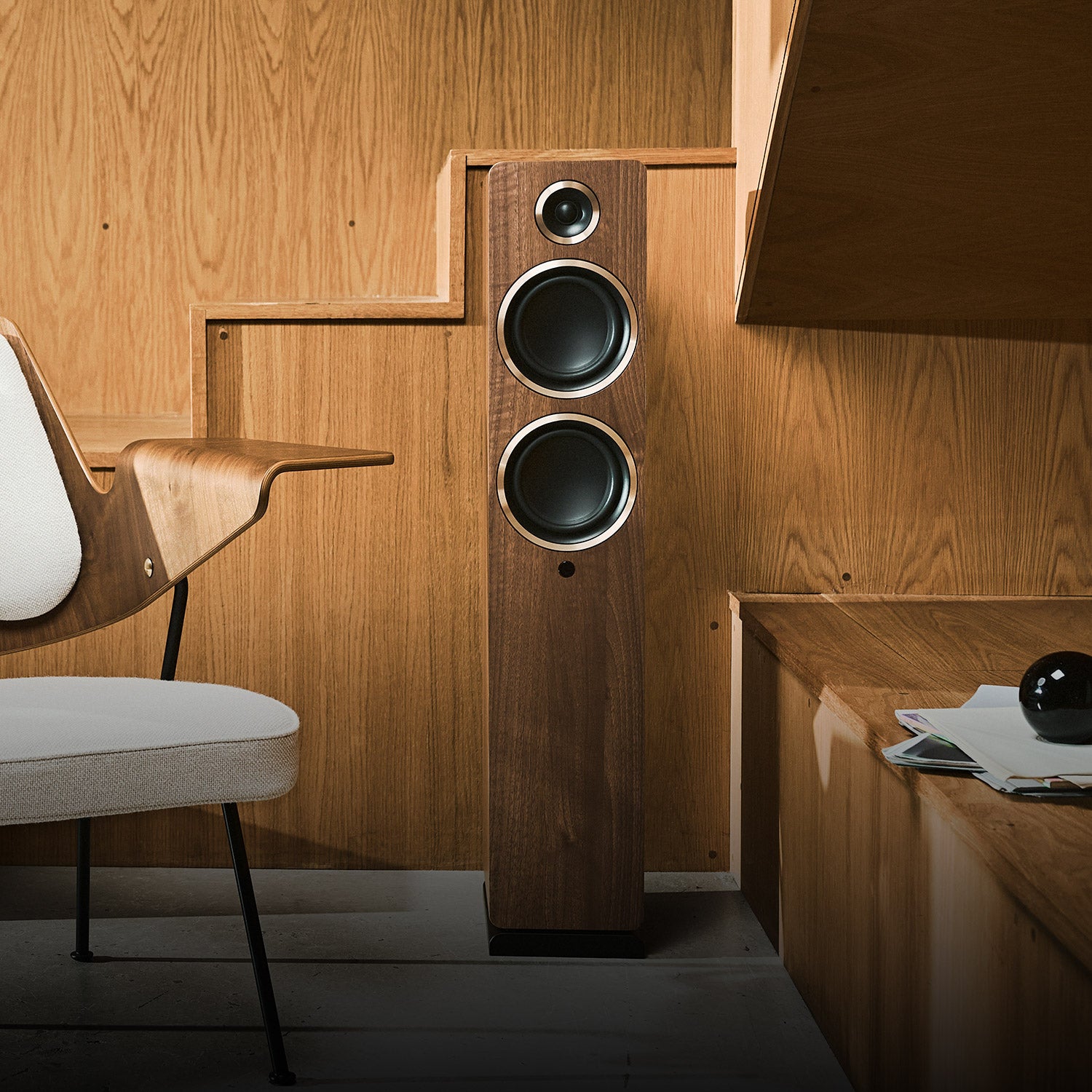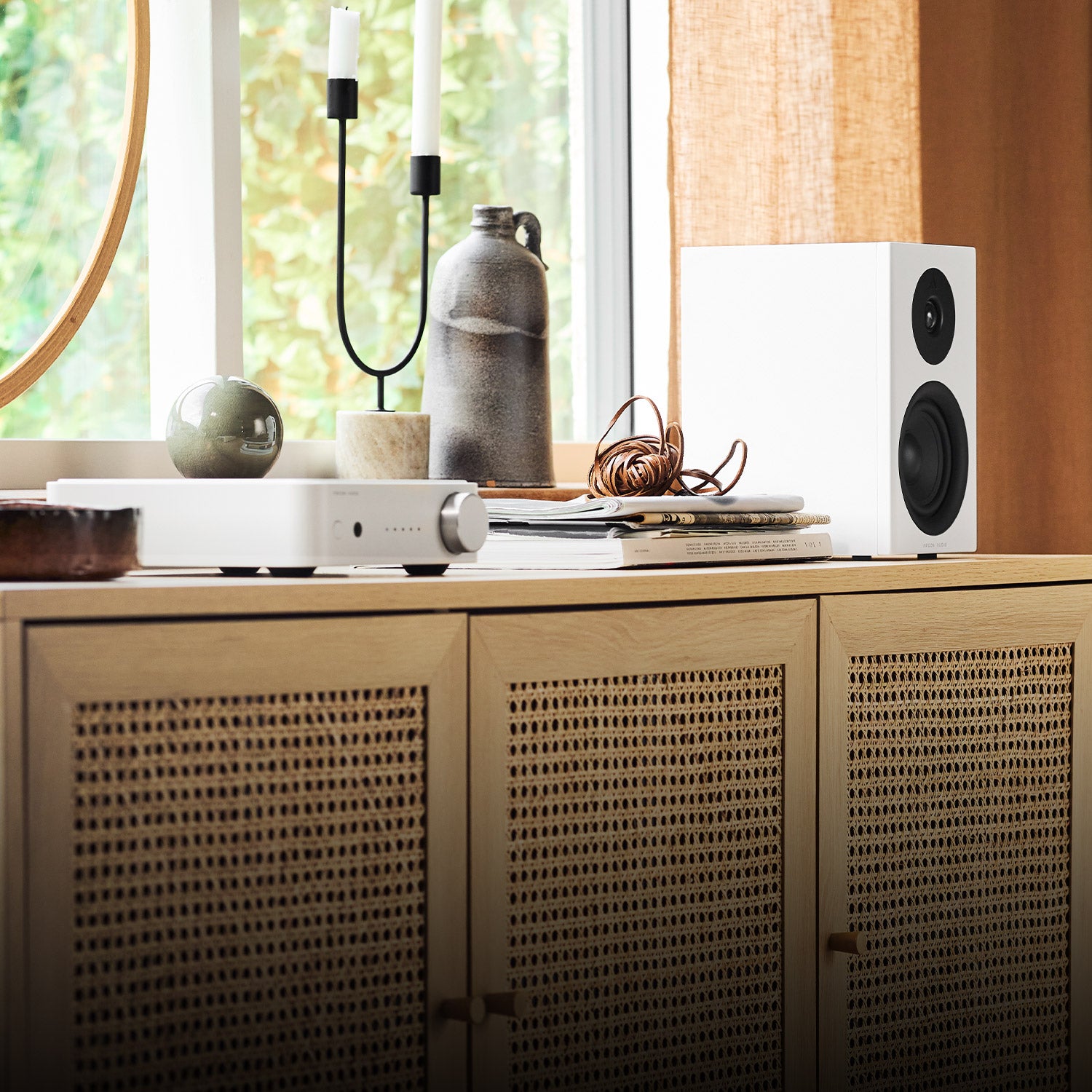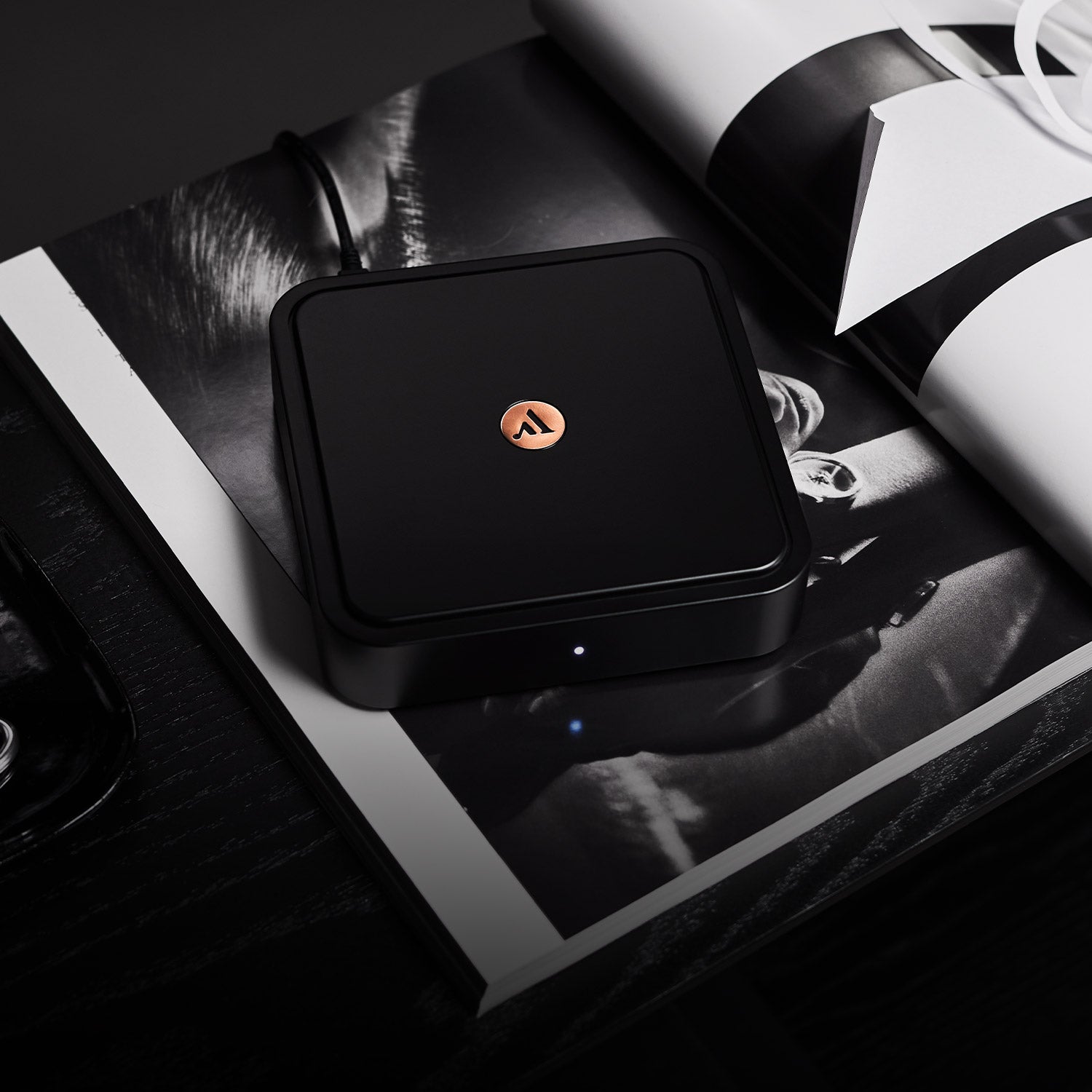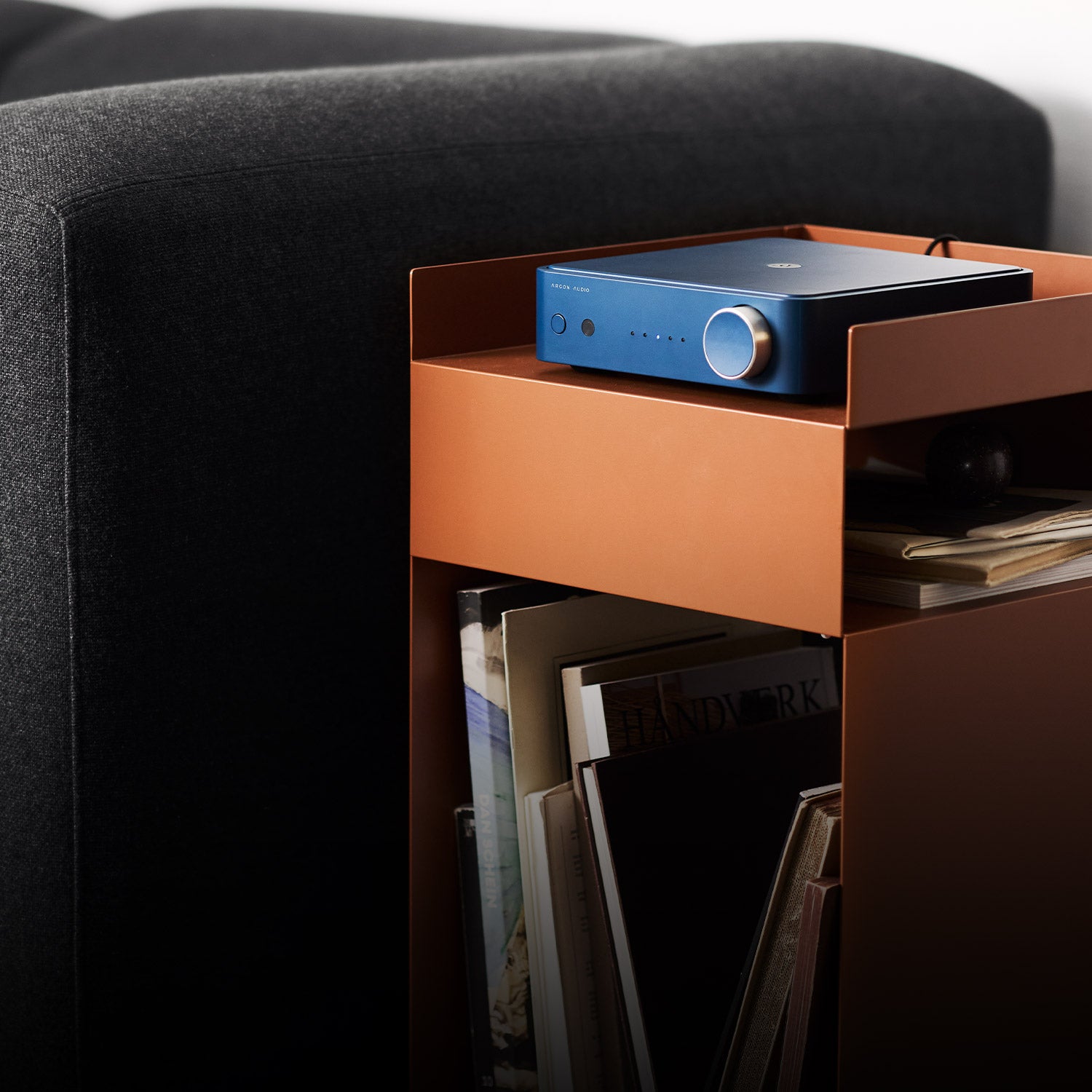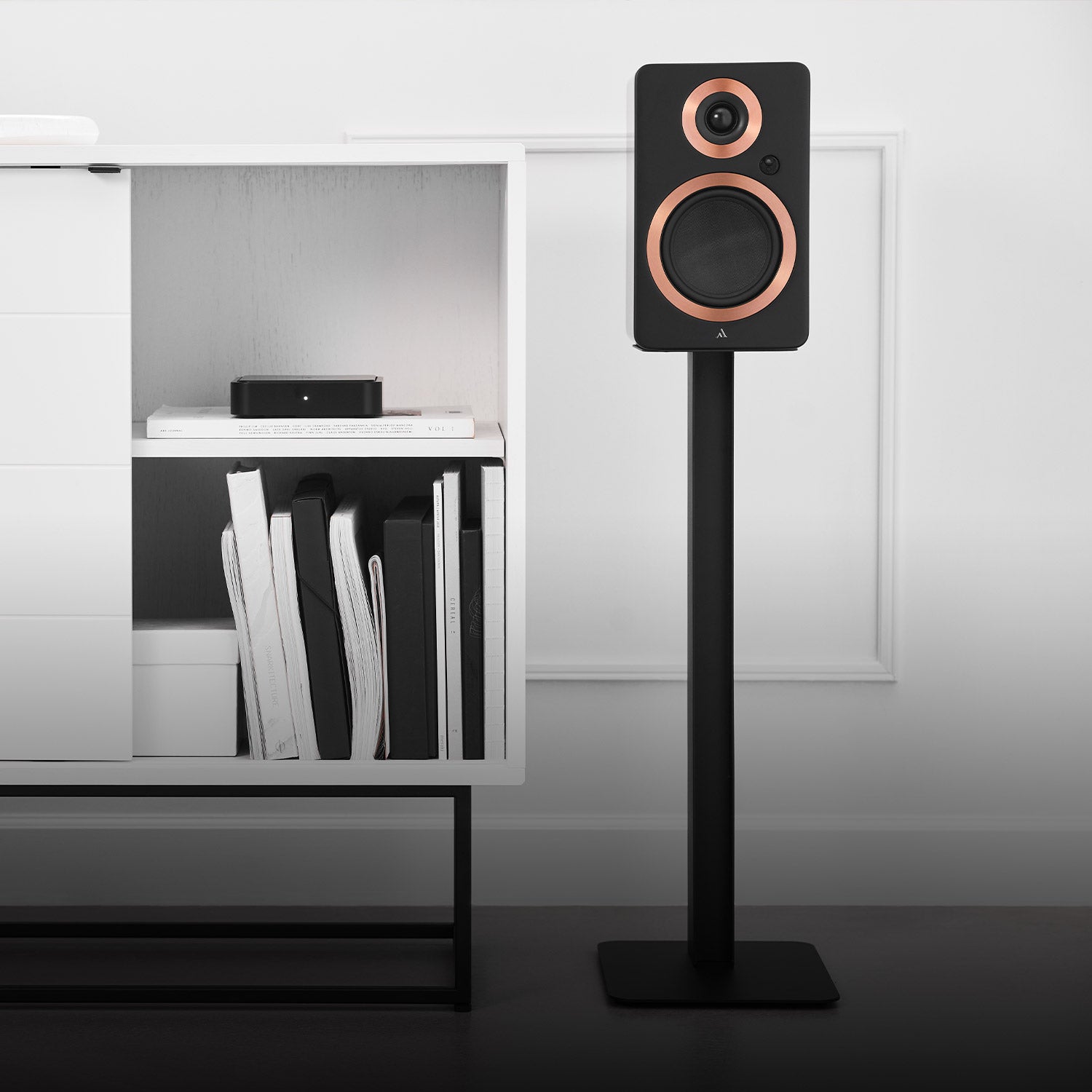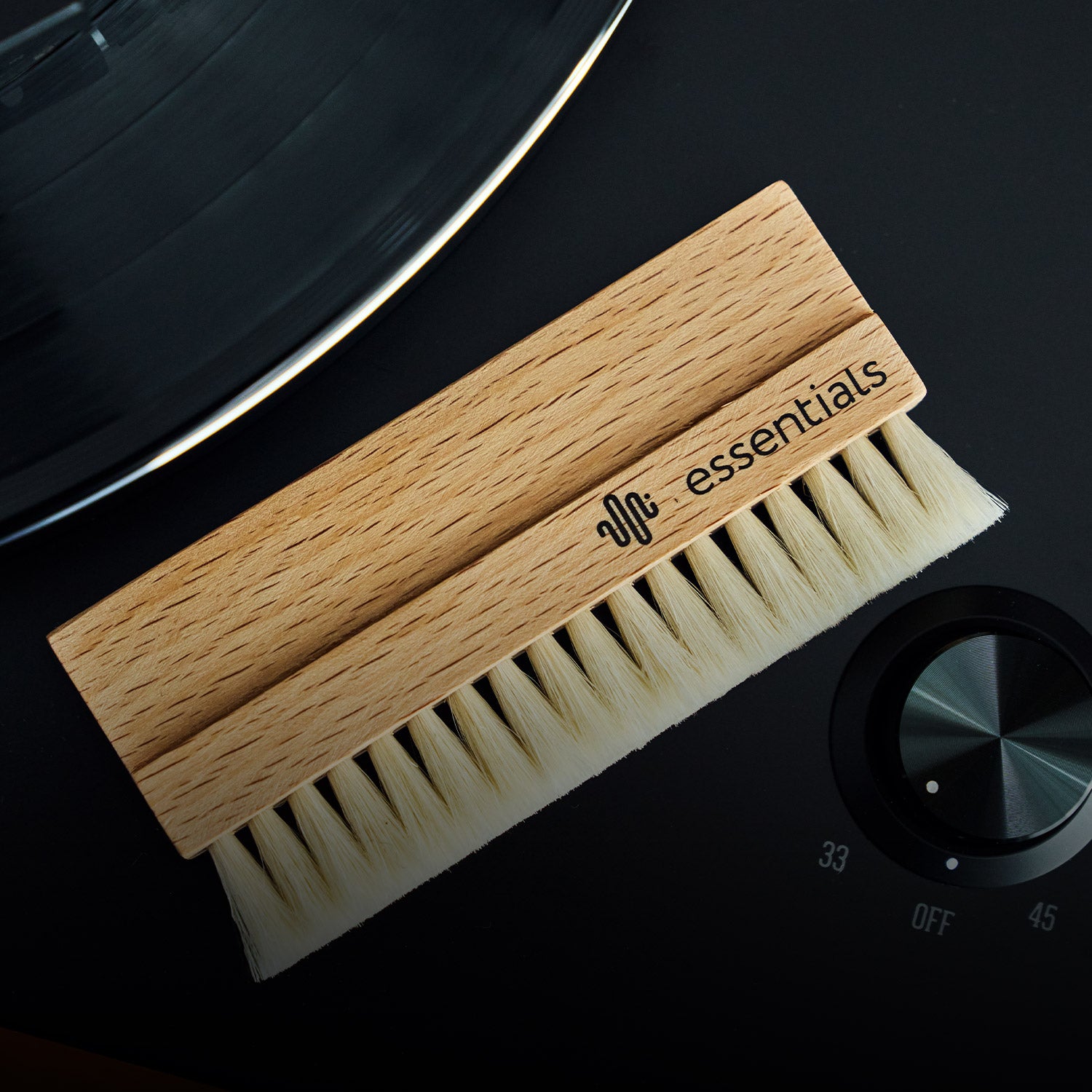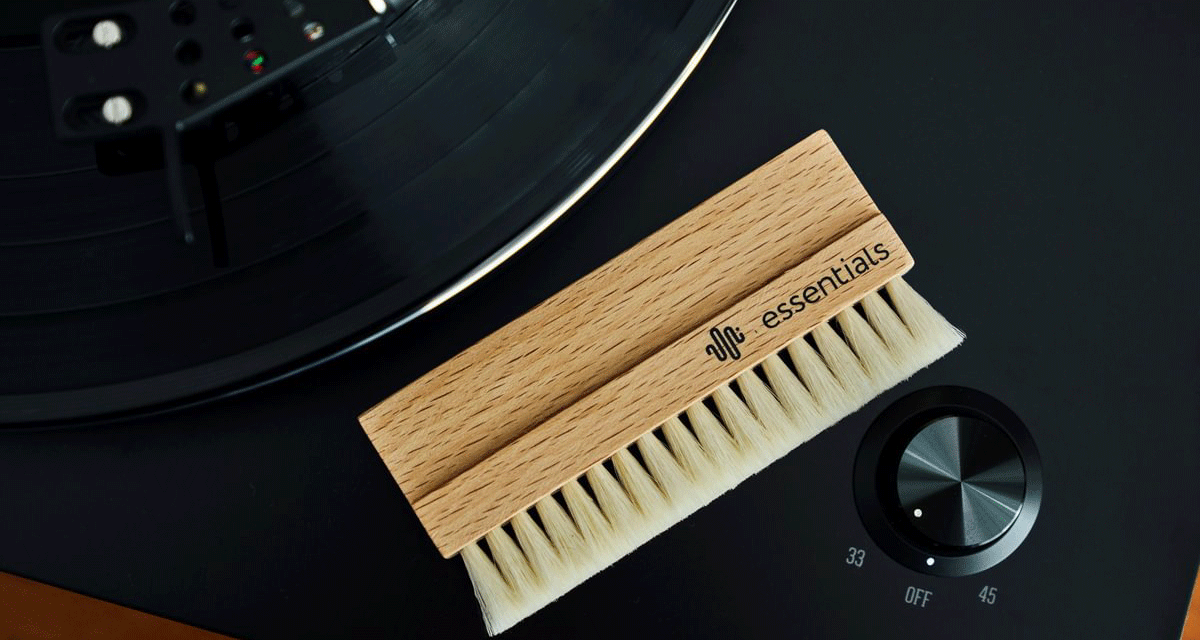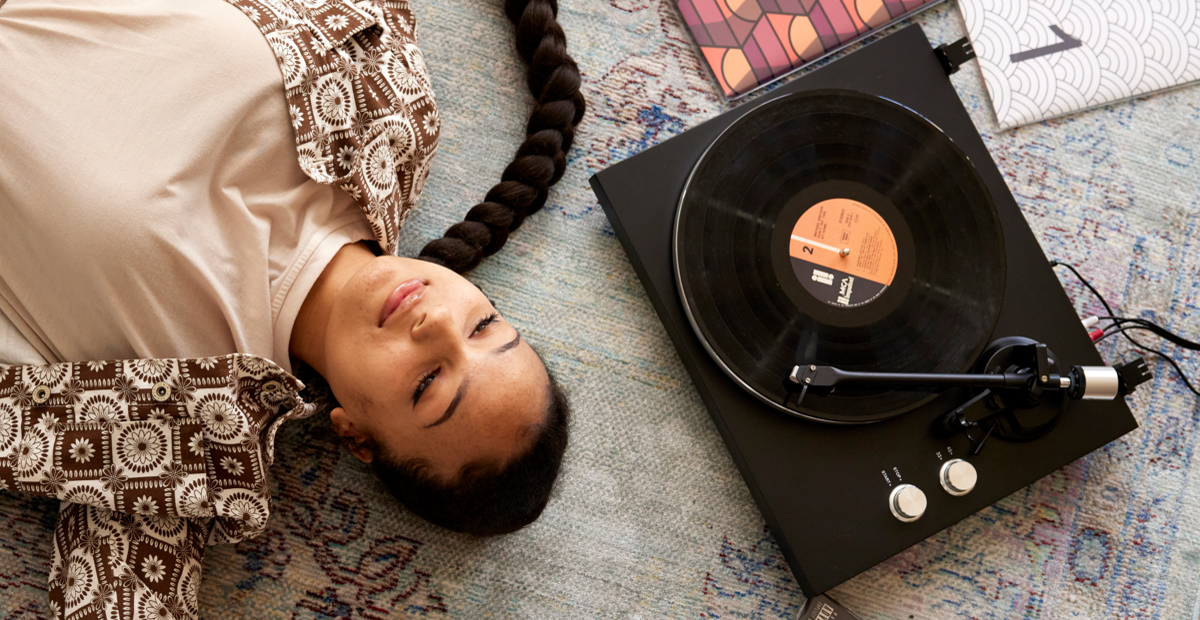Turntables might appear straightforward; the vinyl spins and music comes out. However, they are intricate devices composed of numerous small, precisely functioning components. Since turntables are analog devices, even minor variations can significantly affect performance. Therefore, regular maintenance of your turntable is crucial to preserve its pristine sound quality and extend its lifespan.
Vinyl’s enemy nr.1: Dust
Dust doesn’t just taint your turntable's great looks; it can also hugely affect the sound quality. The way turntables work is that the pickup tracks microscopic engravings on the record, then some kind of magic happens and voilà, music comes out. The point is, that dust on the record or stylus can prevent the pickup from reading the engravings correctly.
Therefore, routine cleaning of both the turntable and the records is a must!
Turntable:
- Make sure to keep your turntable in a clean environment.
- Dust it off using specially-made brushes like the ones found in our Vinyl Kit 3 to gently wipe the plinth and tonearm. A small, soft brush or a can of compressed air can dislodge dust from hard-to-reach areas.
- Clean the Platter: Before and after playing records, wipe the platter with a damp cloth and dry it thoroughly. Avoid using harsh chemicals.
- Keep the dust cover down whenever possible to prevent dust from gathering.
Vinyl Records:
- Regular dusting. Use a carbon fiber or goat hair brush to remove dust before and after each play session.
- Occasional deep cleaning. For records that see heavy rotation or have been stored improperly, consider a deep clean using a record cleaning machine or a professional cleaning solution and cloth. For example, you can use the 'Record Clean' from Vinyl Kit 2.
- Extra tip: Always handle records by their edges and ONLY the edges to avoid fingerprints in the grooves.

Make sure your turntable is set up correctly
A poorly set up turntable can lead to skipping, poor audio quality, or even damaged records. Make sure you follow our in-depth Setup Guide to ensure the longevity of your turntable. Here are a few highlights from that blog post:
- The turntable needs to be positioned flat and level.
- Make sure the turntable is on a surface that minimizes vibrations as much as possible.
- Ideally mount your turntable on a shelf.
- Ensure that the tracking force is set up correctly.
- Don't place your turntable too close to your speakers as heavy bass can affect the turntable's sound quality.
- Adjust the anti-skating to the correct setting.

Mechanical Checks
Be sure to regularly check the mechanical components like the belt, stylus, cartridge and platter. If any of them are damaged, consider either replacing the individual part or the entire turntable.

